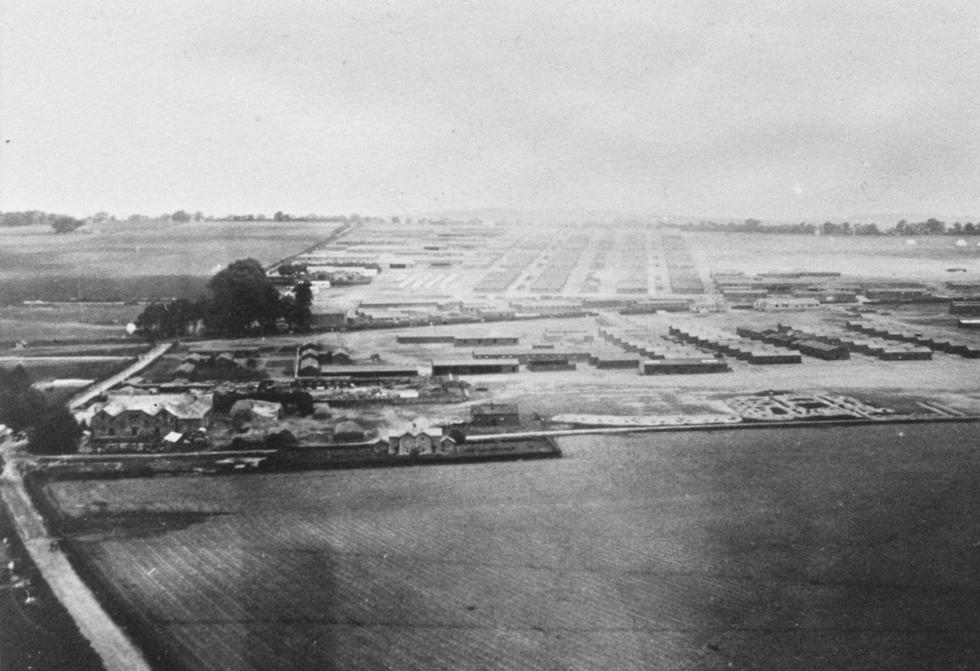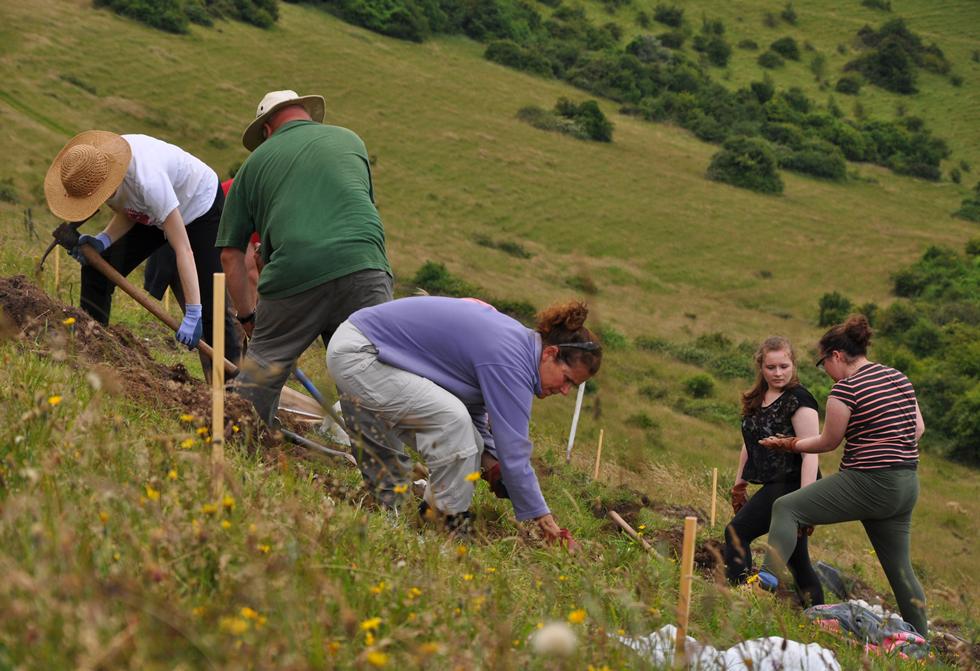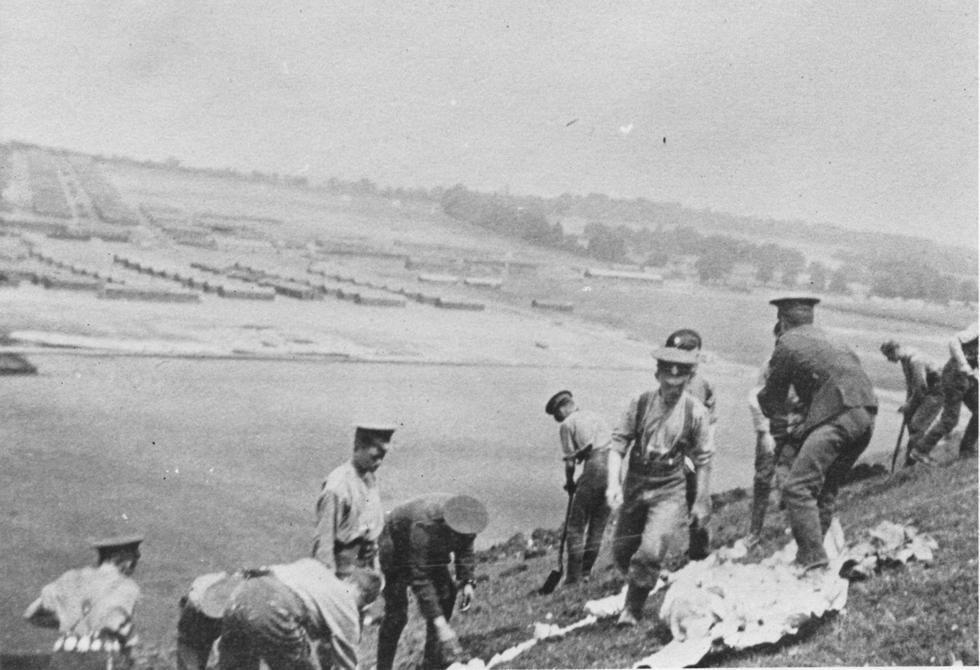Archaeologists investigate iconic landmark and site of huge First World War camp
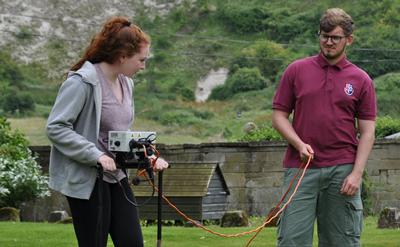
Archaeologists at the University of Southampton are exploring the landscape around a group of giant military badges cut into a chalk hillside in Wiltshire by soldiers waiting to be drafted to the trenches in the First World War.
The team is surveying a large area around The Fovant Badges – army regimental emblems carved into Fovant Down near Salisbury. Their work involves studying the badges, the former site of a military camp and an Iron Age hillfort, by using advanced geophysical techniques to scan below the ground.
The Fovant Badges were constructed from 1916 as a tribute to fallen soldiers by their comrades stationed at a massive army camp nearby. These same troops were destined to fight on the Western Front. Of the 20 badges made during the war, five still survive with a further two constructed just after the Second World War by members of Fovant Home Guard. The last badge was constructed in 1970 by The Royal Corp of Signals. All are now cared for by local heritage group the Fovant Badges Society.
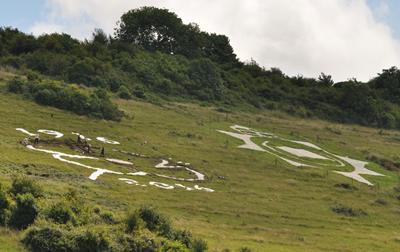
The Southampton research is part of a wider Heritage Lottery Fund project to create a new design on the hillside commemorating the centenary of the badges and the war. Led by the Fovant Badges Society, volunteers and archaeology students are constructing this new design, a Flanders Poppy, alongside the originals. An area around the badges has already been scanned in preparation for this.
Attention is now being turned to the site of the military camp at the base of the Down and the Iron Age Chiselbury Hillfort above. The First World War camp at Fovant was spread across a huge area and stationed tens of thousands of troops waiting to be transported to Europe to fight in the war. They were housed in rows of hundreds of prefab huts and the temporary community was served by a light railway, hospital, post office, YMCA and even a cinema.
Lead archaeologist on the project, Kristian Strutt, of the University of Southampton comments: “Archive plans and photos of the camp show us it was vast – comparable in size to a small town. We hope to establish just how far the site extended across the countryside and look for hidden clues beneath the ground which help us to understand its footprint and identify areas that might warrant further investigation.
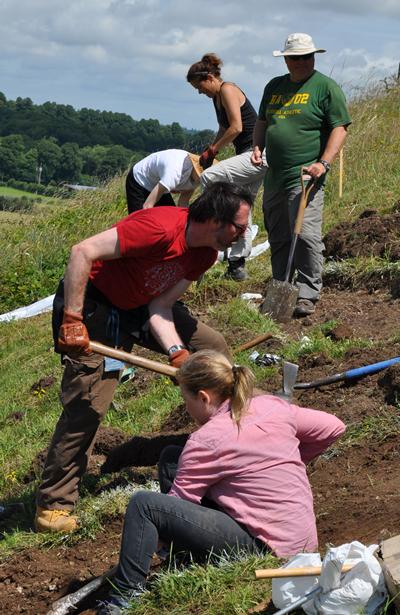
“The research provides a valuable opportunity for our students to be part of a high-profile, live fieldwork project – working alongside heritage organisations and interested groups from the local community, at a time when there is much attention on the First World War.”
Richard Bullard of the Fovant Badges Society says: “This project is part of our Centenary Education Project which is designed to involve young people directly in the Fovant Badges story. Our partnership with the University of Southampton is a key part of the project. We are very grateful for their help and support.”
Commenting on the investigations at the Iron Age hillfort, Kristian Strutt says: “There has only been limited archaeological investigation inside Chiselbury hillfort, conducted in the 20th century. Some pottery and other artefacts have been found nearby, but it is largely unexplored, which makes it an exciting place to be working.”
The Fovant Badges are designated as National War Memorials and Scheduled Ancient Monuments. The hillfort is also a Scheduled Ancient Monument.
The new badge is near completion, ready for an official unveiling later in the year.

